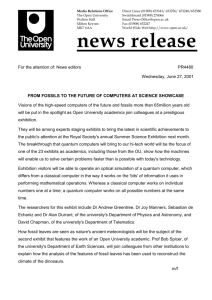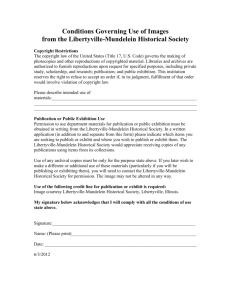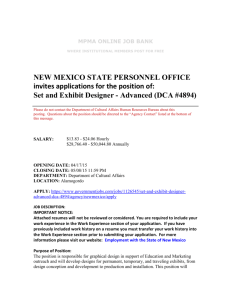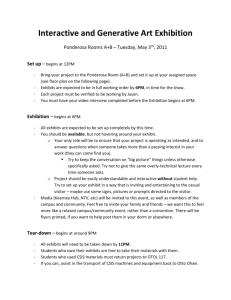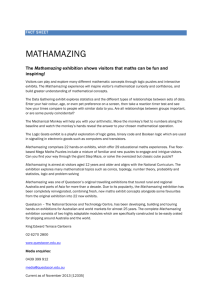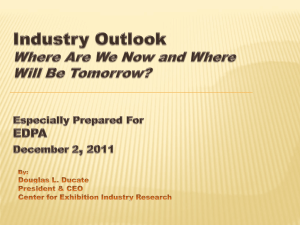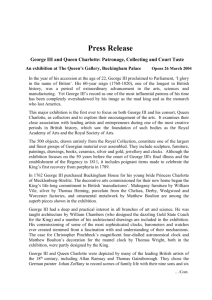Full news release - The Open University
advertisement
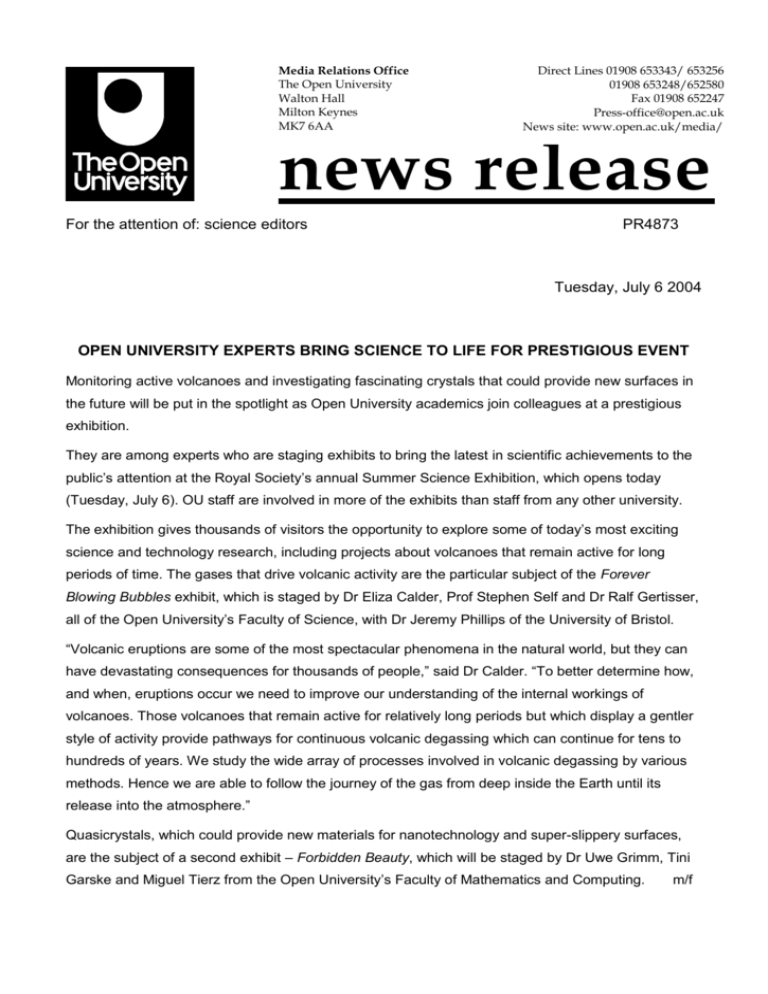
Media Relations Office The Open University Walton Hall Milton Keynes MK7 6AA Direct Lines 01908 653343/ 653256 01908 653248/652580 Fax 01908 652247 Press-office@open.ac.uk News site: www.open.ac.uk/media/ news release For the attention of: science editors PR4873 Tuesday, July 6 2004 OPEN UNIVERSITY EXPERTS BRING SCIENCE TO LIFE FOR PRESTIGIOUS EVENT Monitoring active volcanoes and investigating fascinating crystals that could provide new surfaces in the future will be put in the spotlight as Open University academics join colleagues at a prestigious exhibition. They are among experts who are staging exhibits to bring the latest in scientific achievements to the public’s attention at the Royal Society’s annual Summer Science Exhibition, which opens today (Tuesday, July 6). OU staff are involved in more of the exhibits than staff from any other university. The exhibition gives thousands of visitors the opportunity to explore some of today’s most exciting science and technology research, including projects about volcanoes that remain active for long periods of time. The gases that drive volcanic activity are the particular subject of the Forever Blowing Bubbles exhibit, which is staged by Dr Eliza Calder, Prof Stephen Self and Dr Ralf Gertisser, all of the Open University’s Faculty of Science, with Dr Jeremy Phillips of the University of Bristol. “Volcanic eruptions are some of the most spectacular phenomena in the natural world, but they can have devastating consequences for thousands of people,” said Dr Calder. “To better determine how, and when, eruptions occur we need to improve our understanding of the internal workings of volcanoes. Those volcanoes that remain active for relatively long periods but which display a gentler style of activity provide pathways for continuous volcanic degassing which can continue for tens to hundreds of years. We study the wide array of processes involved in volcanic degassing by various methods. Hence we are able to follow the journey of the gas from deep inside the Earth until its release into the atmosphere.” Quasicrystals, which could provide new materials for nanotechnology and super-slippery surfaces, are the subject of a second exhibit – Forbidden Beauty, which will be staged by Dr Uwe Grimm, Tini Garske and Miguel Tierz from the Open University’s Faculty of Mathematics and Computing. m/f -2They are working with Prof Ronan McGrath, Dr Jon Tobias Hoeft, Dr Julian Ledieu, Dr Dennis Reid and Joseph Smerdon, all from the University of Liverpool. “Many potential applications of quasicrystals derive from their unusual surface properties. They are hard materials with excellent ‘non-stick’ properties and are also being investigated as catalytic materials and for use in hydrogen storage devices,” said Dr Grimm. “In conventional crystals a single building block – the unit cell – is repeated over and over again to give atomic order. But quasicrystals are alloy materials which use several building blocks to form a crystal that has a complex tessellated structure that never exactly repeats.” Other Open University staff are joining colleagues from other universities to stage displays at the event. Prof John Zarnecki, Professor of Space Science, is a member of the team staging the UK Goes to the Planets exhibit, which celebrates this year’s peak of activity in planetary exploration. And Prof Nigel Mason, Professor of Physics, is part of a team whose exhibit focuses on astrochemistry, which attempts to simulate in the laboratory chemical reactions that take place in space. The exhibition is being held at the London headquarters of the Royal Society, the UK national academy of science. Royal Society executive secretary Stephen Cox praised the quality of the exhibits in which the Open University is involved. “The OU’s exhibits are examples of the excellent standard of research we have on display this year. The exhibition is a great chance for members of the public to learn more about the fascinating science which is currently going on in the UK. Being able to talk face-to-face with the researchers lets people experience the excitement and enthusiasm that comes with working at the forefront of scientific research.” The exhibition is taking place at the Royal Society in Carlton House Terrace, London, SW1Y 5AG from today (Tuesday, July 6) to Thursday, July 8. For more information, visit www.royalsoc.ac.uk EDITOR’S NOTES A full list of exhibitors at the Summer Science Exhibition is available from the Royal Society’s press office. The Royal Society is an independent academy promoting the natural and applied sciences. MEDIA CONTACTS Neil Coaten Media Relations, The Open University 01908 652580 n.d.coaten@open.ac.uk Tim Watson Press and Public Relations, The Royal Society 020 7451 2508
